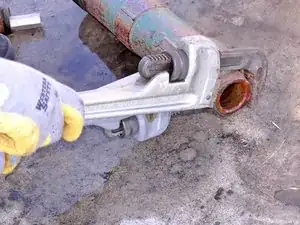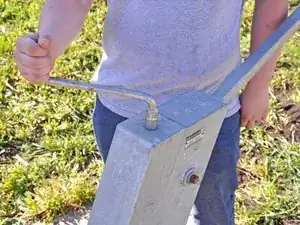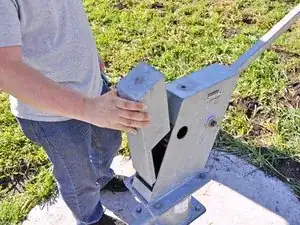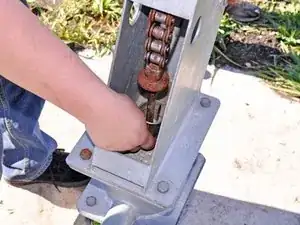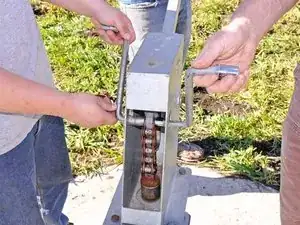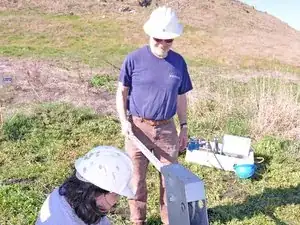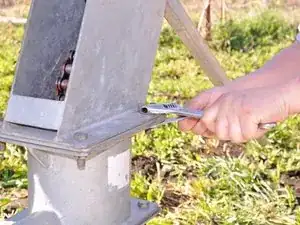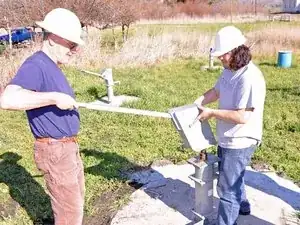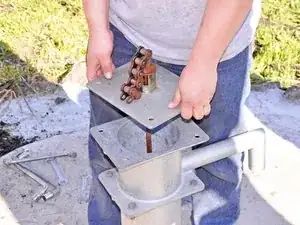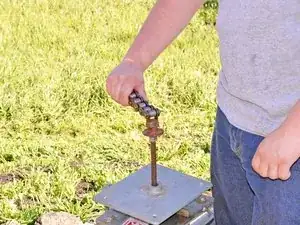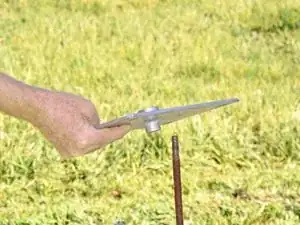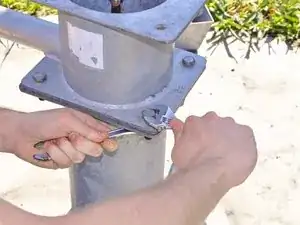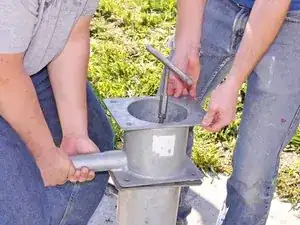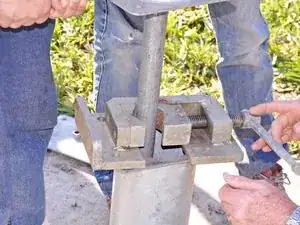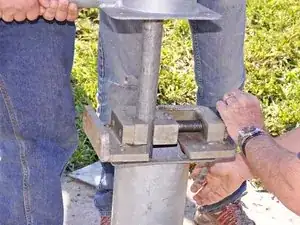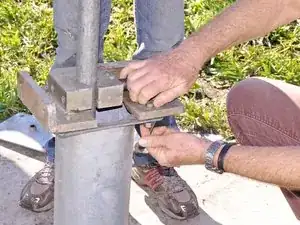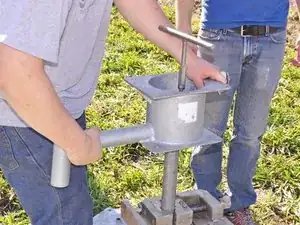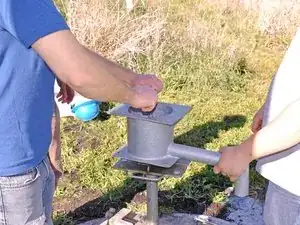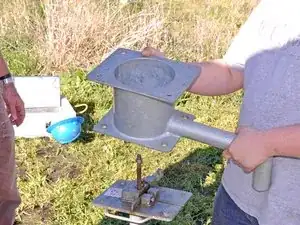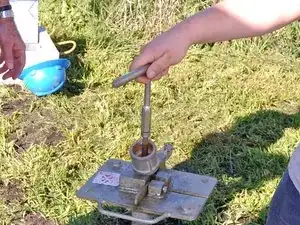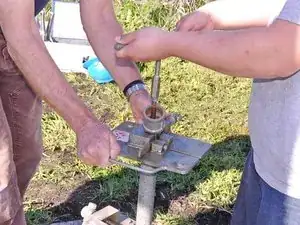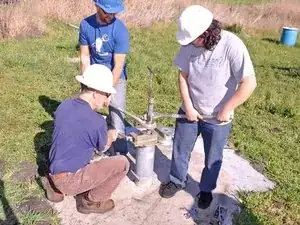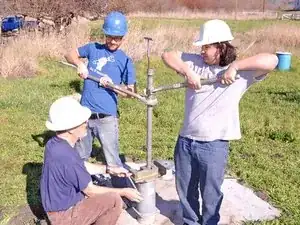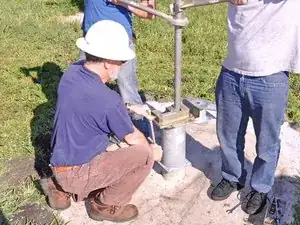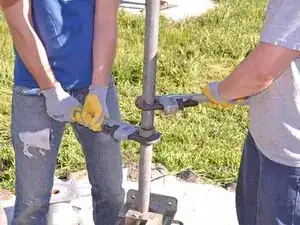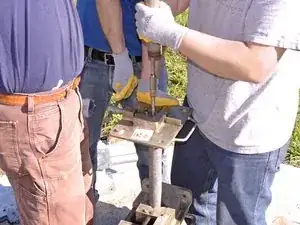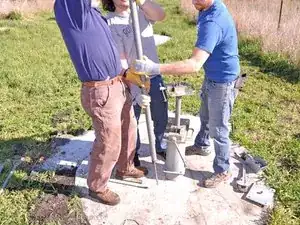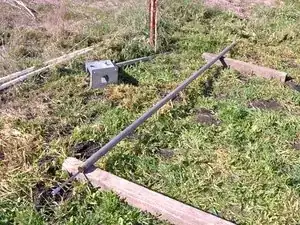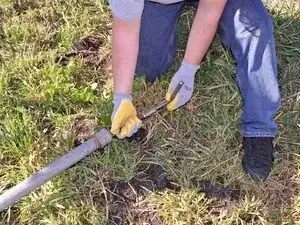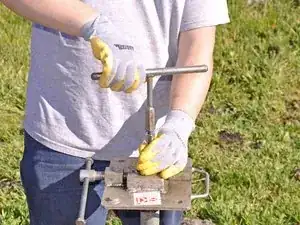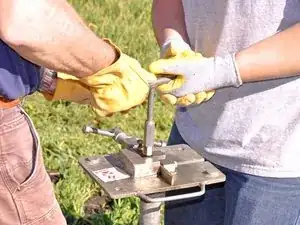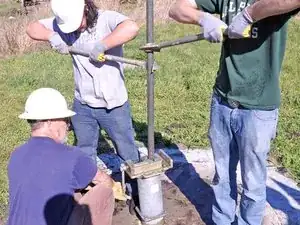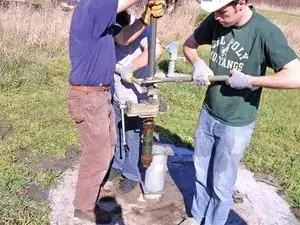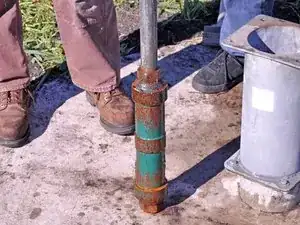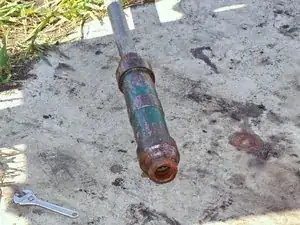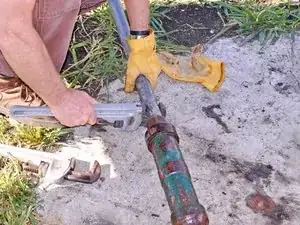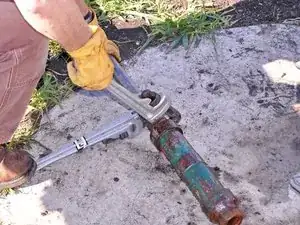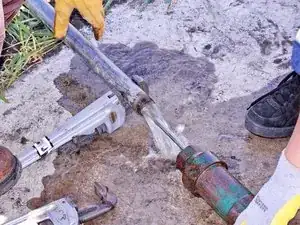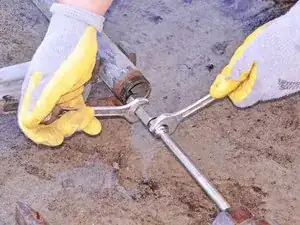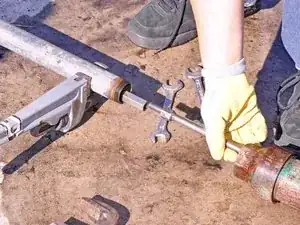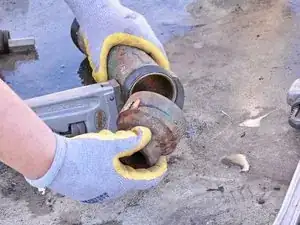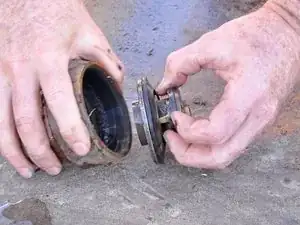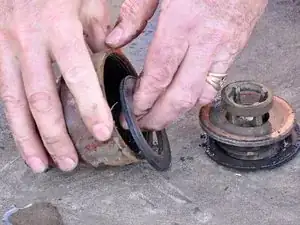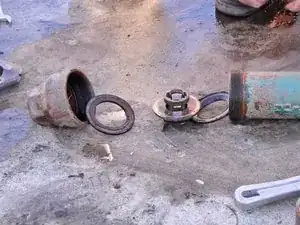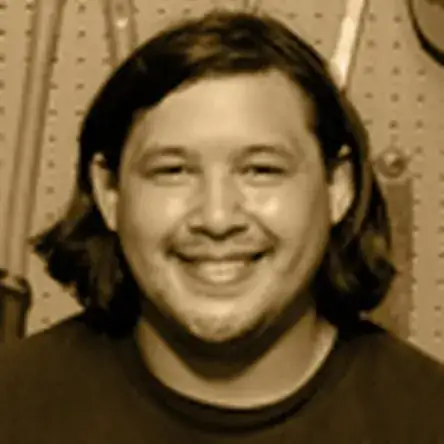Introduction
Inspect, repair, or replace the foot valve assembly in an India Mark II water hand pump.
Tools
-
-
Pull the pump handle all the way down and hold it in this position, exposing the pump rod.
-
Place the spacer around the pump rod and under the chain attachment point.
-
Lift the pump lever until there is no tension in the chain and hold it in this position.
-
-
-
There are 4 bolts securing the head section to the water tank, located at the corners of head section base.
-
Remove the 4 bolts on the base of the water tank.
-
-
-
Lift the pump head off of the water tank and place in a sanitary place, preferably above ground, to prevent contamination.
-
-
-
Lift the plunger assembly and separator plate and place a rod clamp below the separator plate.
-
Tighten the rod clamp and gently set the separator plate on top of it.
-
Remove the spacer.
-
-
-
Hold the rod clamp steady while removing the chain from the pump rod. Check the chain for signs of damage.
-
Remove the lock nut by turning it counterclockwise.
-
Remove the separator plate.
-
-
-
Lift up on the T-handle to take pressure off the rod clamp.
-
Remove the rod clamp and slowly lower the T-handle.
-
-
-
There are 4 bolts securing the water tank to the pump base. They are located at the bottom corners of the water tank.
-
Remove the 4 bolts on the base of the water tank.
-
-
-
Lift the water tank up approximately 1 foot.
-
Place a base clamp around the exposed pipe and tighten it against the riser main.
-
-
-
Secure the base clamp to the pump base with two bolt and nut sets installed on opposite sides of each other.
-
-
-
Turn the water tank counterclockwise until it comes free from the pipe.
-
Lift the water tank up against the T-handle and secure the rod clamp to the pump rod.
-
-
-
Remove the T-handle.
-
Remove the water tank and check for signs of blockage.
-
Store in a sanitary place to prevent contamination.
-
-
-
Lift up on the T-handle to take pressure off the rod clamp.
-
Loosen and remove the rod clamp.
-
Screw the pipe coupling onto the threaded riser main end and slowly lower the T-handle.
-
-
-
Have two people place C wrenches on the riser main on opposite sides of each other.
-
Have the two people with C-wrenches apply light upward pressure to the riser main while the base clamp operator loosens the clamp.
-
Lift the pipe evenly, not exceeding the comfortable lifting height of either lifter. Re-secure the base clamp once the maximum lifting height has been reached.
-
Lower the C-wrenches and repeat this step until the pipe coupling reaches the base clamp.
-
-
-
When you reach the pipe coupling, open the clamp more to allow it to pass through. Lift the riser main approximately one foot above the clamp and re-secure the pipe.
-
-
-
Place one pipe wrench on the exposed coupling and another on the riser main above the coupling. Have a third person stabilize the upper pipe.
-
Hold the wrench on the coupling steady while the wrench on the riser main is rotated counterclockwise until the pipe comes free.
-
Lift the upper pipe and place the rod clamp onto the pump rod below the pump rod coupling.
-
-
-
Lift and hold the upper pipe high enough to expose the pump rod coupling.
-
Place one open end wrench over the lower portion of the pump rod coupling. Hold this wrench steady.
-
Place another wrench on the upper portion of the pump rod coupling. Turn this wrench counterclockwise until the coupling separates.
-
Pull the upper pipe away from the pump and lay it on its side away from the pump.
-
-
-
Remove the T-handle from the pump rod.
-
Install the T-handle on the pump rod still in the well.
-
-
-
Lift up on the T-handle to take pressure off the rod clamp.
-
Loosen and remove the rod clamp.
-
Gently lower the T-handle.
-
Repeat steps 18 through 23 until you reach the pump cylinder.
-
-
-
When you reach the pump cylinder, lift the pipe so that the pump cylinder is just below the base clamp, but is not contacting it.
-
Secure the riser main with the base clamp.
-
Stabilize the pipe by holding it and unbolt the base clamp from the pump base.
-
Lift the riser main, pump cylinder, and base clamp straight up out of the well.
-
Set the cylinder down carefully to prevent damage, preferably on a clean surface.
-
-
-
Use two pipe wrenches to separate the riser main and pump cylinder.
-
Separate the pump cylinder from the pipe.
-
-
-
Slide the pump cylinder down far enough to expose the pump rod joint.
-
Separate the pump cylinder from the pipe and push rod using two crescent wrenches.
-
-
-
Place one pipe wrench on the pump cylinder body and another pipe wrench on the lower end cap.
-
Turn the lower end cap counterclockwise until it separates from the pump body.
-
Remove the lower end cap.
-
-
-
Remove the foot valve by pulling it straight out of the end cap.
-
Pull the lower seal out if it did not come out with the foot valve.
-
Check the foot valve components for wear or damage.
-
-
-
After reassembling the pump cylinder, test it by moving the valve up and down in a bucket of water to make sure all components were reinstalled properly.
-
To reassemble your device, follow these instructions in reverse order.
